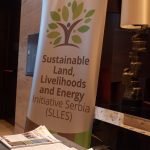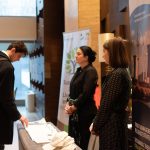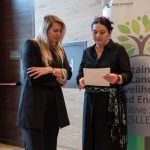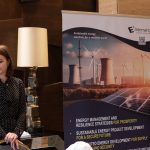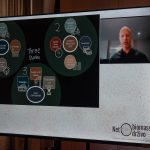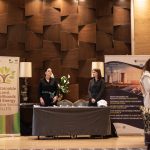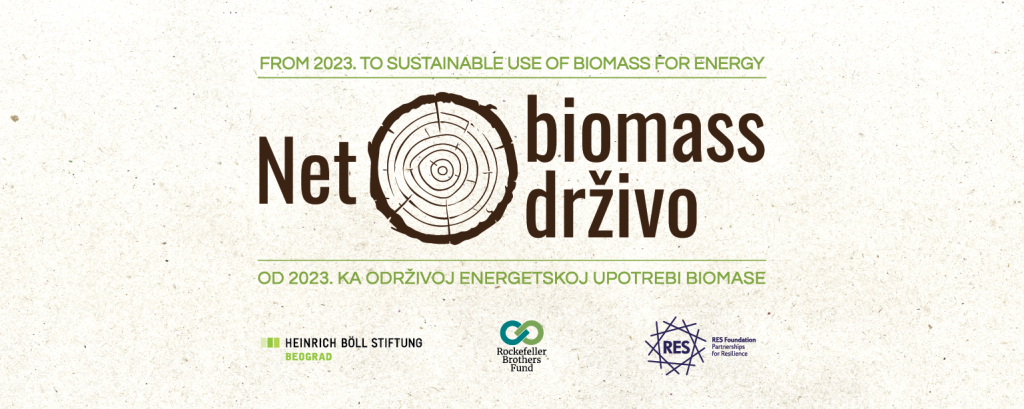
Thread tactfully on biomass, but with much more ambition!
It’s a wrap: our net 0 biomass conference on Wednesday was an exciting opportunity to look deeper into the role that sustainable biomass can play in the net 0 future of our region, and even more specifically, of Serbia and Bosnia and Herzegovina.
There are three major reasons why a broad and transparent dialogue on the use of sustainable biomass for energy is needed in both countries including the development of appropriate policies.
The first one is embedded in the facts. Traditional biomass is the key source of energy in the Western Balkans and the key source of renewable energy production in Serbia and Bosnia and Herzegovina. In 2020, primary solid biofuels accounted for 39% and 64% of all residential energy consumption in Serbia and Bosnia and Herzegovina respectively. Millions of tonnes of cut wood for decades dominate these percentages. They are burnt inefficiently and produce huge amount of waste heat and pollution. At the same time modern uses of biofuels and biowaste accounted only for 1% of domestic electricity supply in Serbia and 0% in Bosnia and Herzegovina. We burn extensively and inefficiently but we also fail to grow as much forests as we could, given the land quality and climate conditions. The most recent data from Serbian forest inventory are yet another proof of that. As a result, we lose carbon sequestration potential and potential for ecosystem services because of suboptimal management.
The second reason stems from the EU policy framework that with the most recent adoption of the Renewable Energy Directive (RED III) strengthens the sustainability criteria for the use of biomass for energy to reduce the risk of unsustainable bioenergy production. It mandates the implementation of the so-called ‘cascading principle’. In line with this principle, woody biomass should be used according to its highest economic and environmental added value in the following order of priorities: wood-based products, extending their service life, re-use, recycling, bioenergy, disposal. The studies underpinning this major piece of legislation highlight numerous constrains and risks of unsustainable use of forests related to carbon sequestration and biodiversity.
The third one brings us to the RED III obligations and its focus on forest biomass concerning the National Energy and Climate Planning process. However, forest biomass is still not a part of a dialogue and decision making within National Energy and Climate Plans in the WB countries. For example, the draft National Energy and Climate Plan, in Bosnia and Herzegovina envisages modest biomass energy production in power and heat facilities to achieve policy targets and does not address any of the aspects of traditional biomass use, while in Serbia it does not mention neither use of biomass for power production nor more efficient use of traditional biomass.
With thanks to our panellists in all three sessions: on the sustainable biomass resources (knowledge for net 0), on the value propositions of sustainable biomass energy (economics of net 0 biomass), and on the regulatory frameworks that can get us to better-informed use of sustainable biomass resources (policy for net 0), we are now far better placed to develop this conversation further in very specific directions.
We learned that we can boast leading scientists and build on the biomass knowledge base that has much more to offer to political decision-makers on energy transition than has been the case to date. We also understood in no uncertain terms that, whilst the commercially oriented, business sector is the best at management and value-creation initiatives – it is not going to do this alone: an open and continuous dialogue, partnership, and interaction needs to emerge between all stakeholders, starting with the biomass science in each of the individual segments or types of biomass, and including policymakers, local communities, and civil society organisations.
Moreover, that dialogue and a sense of partnership need to depart from the “silo” of the most traditional ‘biomass sector’ of forestry and reach out to related governance sectors such as spatial planning, agriculture, erosion prevention, biodiversity protection, climate policy, air quality protection, to name just a few that were quoted in our discussions.
The development opportunity, the climate change mitigation opportunity, air quality protection opportunity, employment growth opportunity, and others – presented by the potential introduction of efficiency benchmarking into future decisions on increased public and private investment into improved management of forestry resources – are second to none. But it will require tough conversations to present clear policy evidence and inform other stakeholders on the prospects of more development ambition than our governments have articulated in the last 30 years.
Finally, we were inspired by tested and inventive policy-making in other corners of Europe, presented by guest speakers from the UK, Finland, and the IEA advisory panel on biomass technology. That said, we understood that a workable mix of policies and solutions for Bosnia and Herzegovina, Serbia, and the rest of our region will, in all likelihood, not come from without. To thread more ambitiously and with the required tact and sensitivity will require a strong sense of policy ownership that requires an authentic, bottom-up approach.
This has been such an inspiring first step in what we know will be an interesting new conversation on why and how we need to articulate an sustainable biomass policy in service of our net 0 energy aspirations. We can’t wait to facilitate and hear more voices in the new year, so do watch this space!


